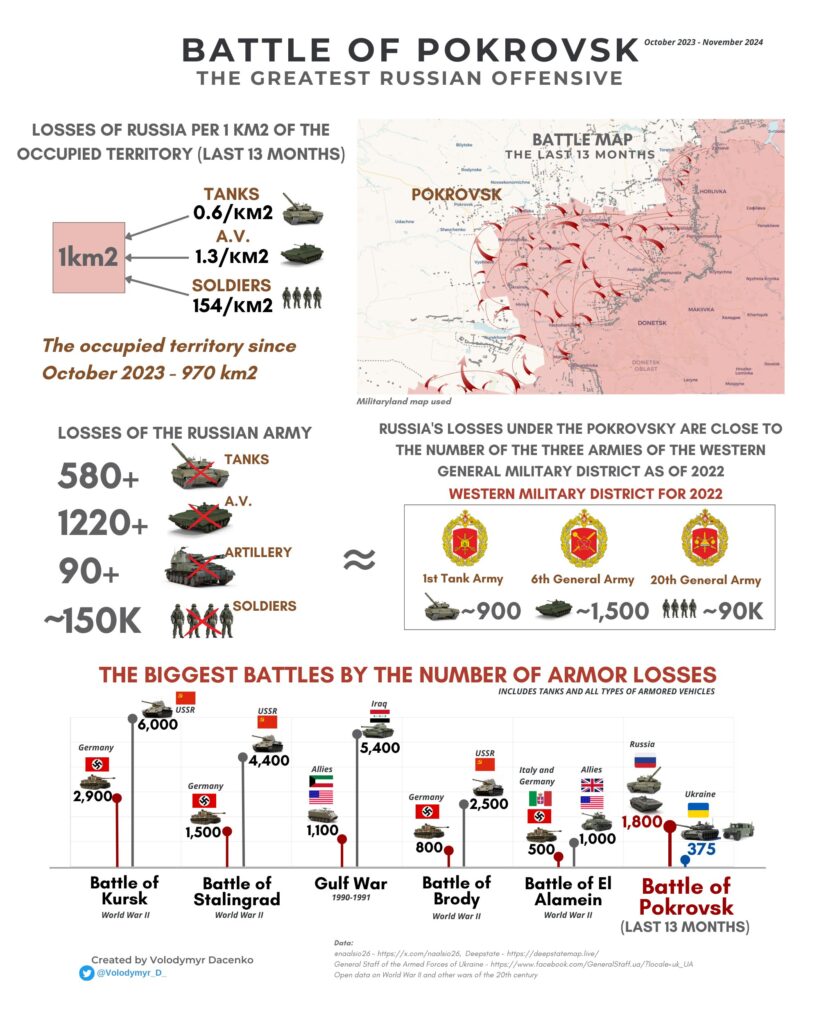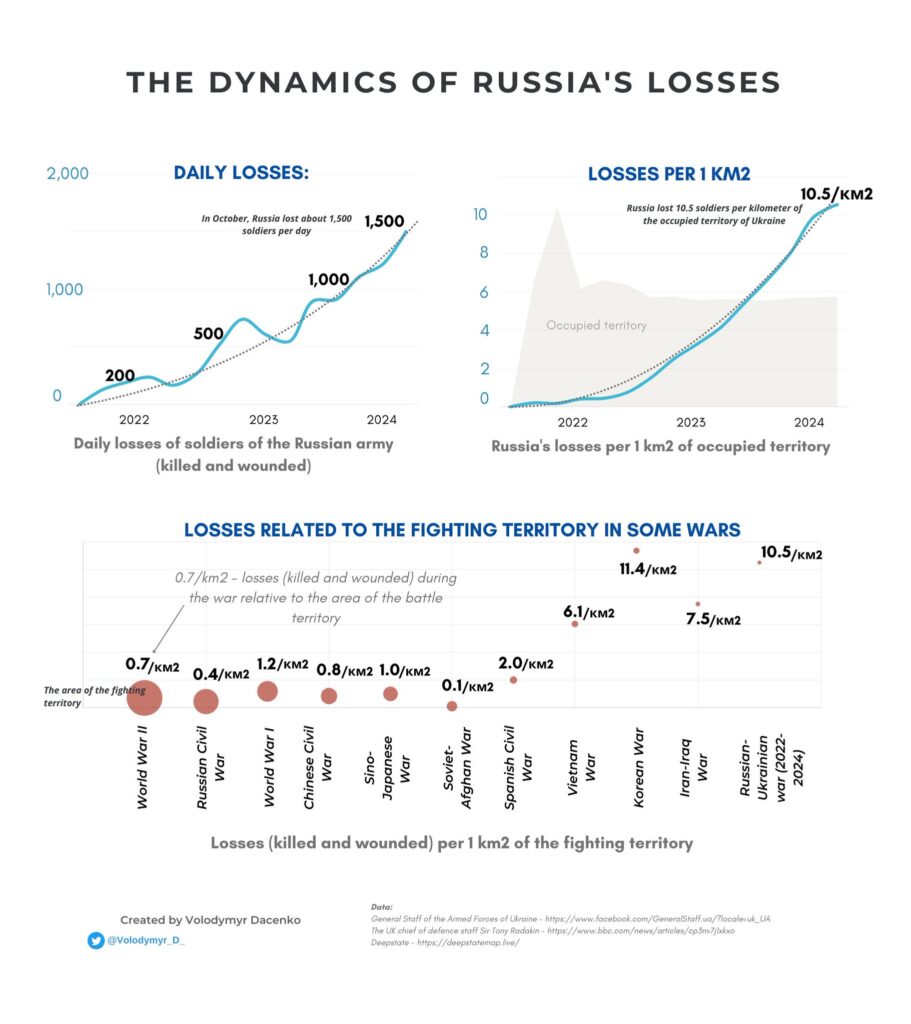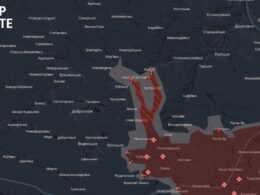The Russian army continues trying to capture the city of Pokrovsk in Donetsk Oblast, a strategic hub the loss of which would significantly complicate Ukraine's fighting in the area.
Despite multiple "human waves," Russia has yet to capture the embattled city, with Estonia's intel chief praising Ukraine's Armed Forces for resisting the massive Russian assault.
OSINT researcher Volodymyr Dacenko explains what's happening on the battlefield in his analysis of the "Greatest Russian Offensive."
The battle of Pokrov became the biggest battle of this war. But it also became one of the largest battles in history regarding the number of armored vehicles lost.

In the battles near Pokrovsk, Russian losses are close to the number of the entire Western Military District of the Russian Federation as of 2022, which was being prepared for war with NATO. This is about 60% of the forces with which Russia planned to seize Ukraine in three days in 2022
In October 2023, Russia defined the offensive on Pokrovsk as the main axis of its offensive campaign. Obviously, Putin is focused on the goal of completely capturing the Donetsk Oblast as the highest priority goal in the coming years. But this offensive led to colossal losses.
During the first few weeks of the offensive, Russian losses were estimated at 13,000 soldiers. In February 2024, Russian losses were estimated at 47,000 soldiers killed and wounded. In the future, the dynamics of battles in this direction did not decrease.
Under this dynamic, Russia's total losses for 13 months of fighting in the Pokrovsk direction amount to about 150,000 soldiers killed and wounded. This is more than Russia's losses in the battles for Bakhmut (100,000).
Only the visually confirmed losses of the Russian army during the 13 months of fighting in the direction of Pokrovsk amount to 1,800 units of armor. The real losses are even greater. How much is that?
The number of Russian casualties in the Battle of Pokrovsk is close to the number of the Western Military District as of 2022, which included three armies: the 1st Tank Army, the 6th and 20th General Armies.
The Western Military District of the Russian Federation was supposed to oppose the armed forces of NATO on the territory of Europe, and the First Tank Army was Putin's greatest pride (the largest tank army in the world).
Imagine if some general proposed an offensive plan that involves the loss of three armies in the battles for two small cities with a total population of 95,000 before the war (Avdiivka and Pokrovsk). Any country would recognize this as madness.
Russia lost more tanks at Pokrovsk than any country in Europe has in its army. Or more soldiers than the entire Armed Forces of the United Kingdom. Remember this when you read the news about the battles for a small town in eastern Ukraine.
Perhaps in the future historians will have to revise the term "Pyrrhic victory" and replace it with "Putin's offensive." But it does not seem that Putin and his generals are capable of abandoning the continuation of the offensive on Pokrovsk, no matter what the cost to the Russian army.
Trending Now
It is hard to believe, but the Russian losses of armored vehicles at Pokrovsk are greater than the losses of the German army in the Battle of Stalingrad. The Battle of Pokrovsk may become one of the largest offensives in history in terms of the number of armored vehicles lost.
For every kilometer of occupied territory in this direction, Russia loses 10-15 times more resources than in all other directions. And this testifies to Putin's mad obsession to show everyone that the Russian army does not stop, but continues to advance.

In the coming months, the Russian army will probably launch no less brutal battles and frontal attacks. These months will be the culmination of the Pokrovsk offensive, an offensive in which Russia will lose three armies to assert the ambitions of its dictator.
I would like to thank @naalsio26 and other Osint researchers who continue to provide us with information about this war.
/rela
Related:
- Resources of war: Can Russia sustain its war in Ukraine for years? (infographics)
- Ukraine is gaining the upper hand. But it needs more help





